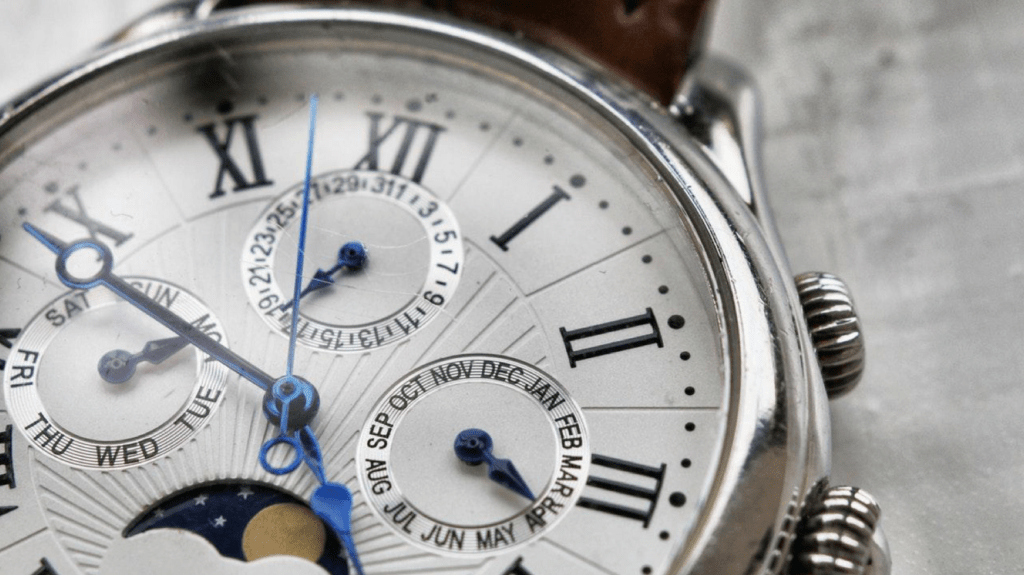The skeleton watch is a product of both complicated science and the sophistication of art. It both possess the wonders of time as well as and the beauty of human technology. The marvelous skeleton watch showcases its inner beauty, just like its balance wheel, the mainspring, the escapement as well as its tourbillon.
This watch purely deserves an appreciation. The watch’s design to its functionality is genuinely remarkable. Sometimes these skeleton watches are made from fine materials like silvers or gold, which makes this watch to be considered as luxurious.
The History
Contents
In 1760, Andre-Charles Caron first invented the skeleton watch. He believed that by revealing some of the mechanism will spark an interest with the customers, and it did. Sadly, during that time, the watch industry is facing a downfall.
When the watch industry found its way back to in the 80s and early 90s, there were a few numbers of wristwatches have been skeletonized. The idea of Andre-Charles Caron finally took off. A couple of years since that, about twenty of the said watches made its way to the top. The magnificent handcraft and flamboyant style are being told the reason behind the captivity of the heart of the rich personas.
Since that day, a lot of skilled watchmakers and disciplines are in high demand. One of them is Armin Strom, and he showed his first masterpiece at Baselworld in the year 1984. This became the foundation of his career, and he made his brand name in 2006. Another one is Jochen Benzinger, who continues to create a masterpiece up to this day.
Appreciating Its Beauty
Considered as a fascinating product, the skeleton watches surpasses these three key elements. The mechanics or its mechanism, the sophistication of its art, and most of all, history. The skeletonizing idea alone is astounding; that idea made this watch undeniably beautiful and famous across the world.
Making one skeleton watch expresses so much effort and hard work. A lot of watchmakers gives a lot of attention to details from the inside to outside. The skeletonizing of the watch reveals so much intricacy to the movements of its interior; this highlights even the small actions of the complexity inside the device.
In addition, the decoration of the inner mechanism of these skeleton watches is outstanding. The watchmakers use techniques such as engraving, polishing, embellishing to improve the mechanical configuration within the watch. These techniques require skills trained in centuries by tradition and specialized tools and being passed on generations to generations.
The Design
The design of one skeleton watch depends on what movement is exposed. Some models made the dial completely removed while some design leaves a section of the said part. Also, the design depends on how or what the watchmaker wants it to be, either sticking to tradition or with a modern touch.
The exhibition case on the back is often how the mechanism is exposed. This will make the skeleton visible from the front to back; this gives the skeleton watch a steam-punk vibe. While some design removed the dials but retained the hour markers, the other design only left the exposed mechanism and hands of the watch.
The skeleton watch is indeed full of heritage and which made this a subject of many watchmakers as their prime tool to express their art. A lot of skeleton watch has a touch of modernity, and some remains traditional. Engraved by hand or machine, the patterns, and the materials are also considered as one of the factors of the design.
Engraved by hand
Engraving is a crucial part of designing the watch and also pick the right motif. The components of the watch are designed with a particular motif, and sometimes some sections are removed. This will give the watch an appearance of a lattice-like. When the watchmaker is engraving it by hand, one must take extra care not to chip too much metal from it. Removing too much of the parts will ruin the smoothness of the watch.
Engraved by Machine
The machine engraved is more precise than the hand-engraved, but some of the watchmakers consider this as a loss of a real masterpiece. This engraving contains a lot of chemicals, like acid reagents and UV rays. A laser is cutting the parts here. Another way of engraving is mechanical engraving; this method is used for numbers and letters.
Patterns
There are three types of patterns when designing the skeleton watch. The first one is the Guilloche, where it is typically an interwoven line. Also, this pattern is mostly to watch dials. The second one is Cotes de Geneve or Geneva Stripes; it is often etched to watch movement or higher grade watch movements. Lastly is Perlage, where it is a cheaper design and consists of overlapped circles.
Materials
Jewels, golds, and silvers are often used materials by watchmakers. This made these watches considered by many as luxury skeleton watches. The jewel’s role is to act as a bearing, which reduces friction. The gold and silver act as plates on the exterior part of the watch.
The Technology
There’s nothing extraordinary about the technology behind this watch. Just like the typical watch, the skeleton watch has the core parts that make it functional. The skeletonization is for aesthetics only. But overall, the skeleton watch possesses both functionality and sophistication.
Takeaway
The skeleton watch is truely full of history as well as class. This watch is purely a product of human’s greatness in terms of art and innovative technology. Our desire to do more and want more in making our devices look and function even more better is remarkable. The skeleton watch is one of the proofs that art and technology can co-exist in one masterpiece.

